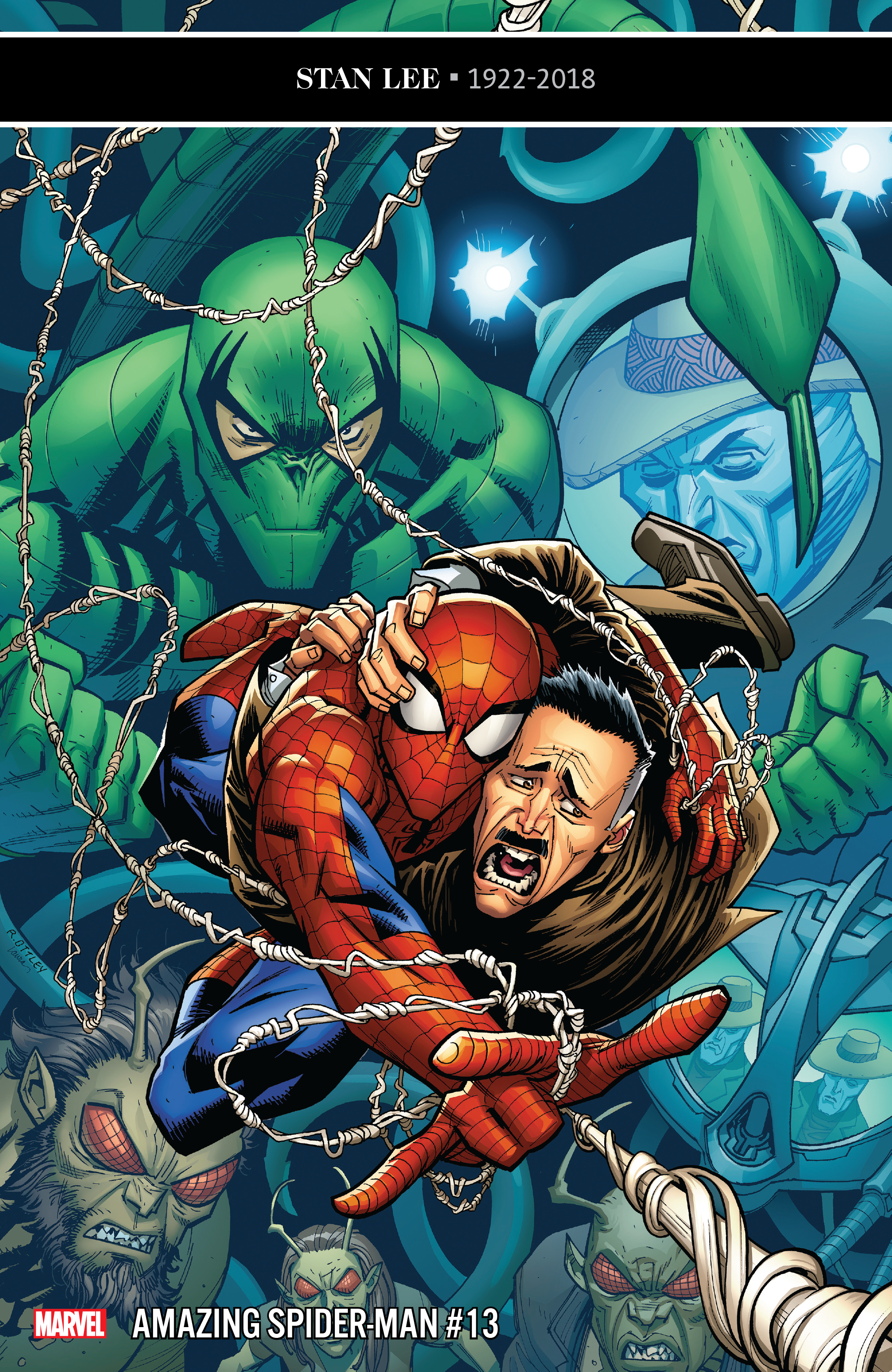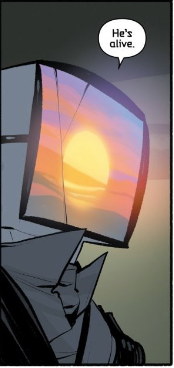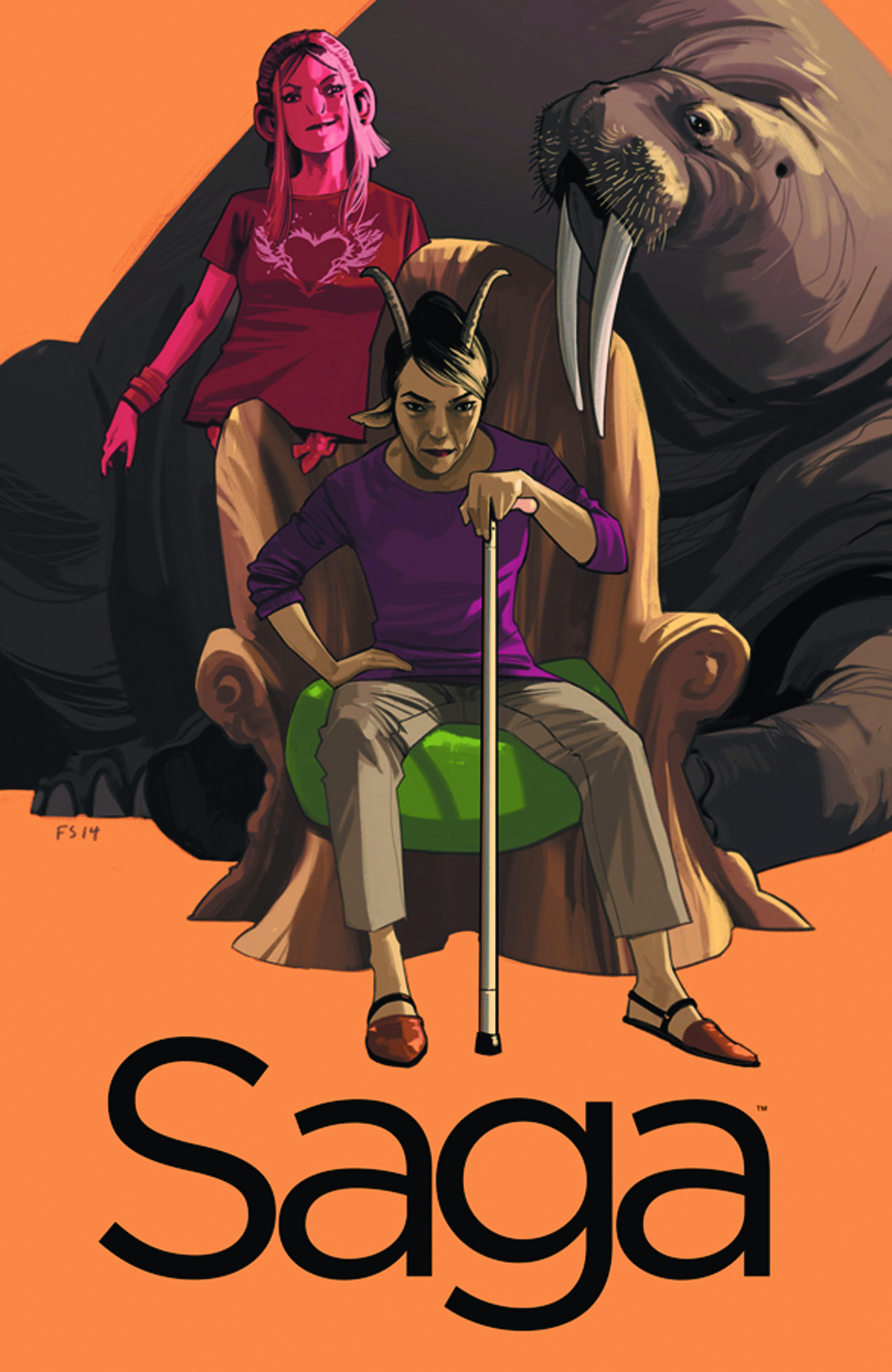Most Anticipated Comics of 2019
By Zack Quaintance — For a certain type of comics fan (which is, indeed, most of us) part of the fun of the hobby involves looking to the future. We ogle distributor solicitations the way some folks plan vacations, vicariously living out our forthcoming book purchases months in advance. Essentially, the excitement is as much in the anticipation as it is in the actual consuming of the story. This isn’t just a comics thing (people freaking love movie trailers and speculation these days, if you hadn’t noticed), but this is a comics site, so we’re going to go ahead and focus on that.
To that end, today we’d like to take a look at some of our Most Anticipated Comics of 2019. This is inherently tricky business. Books that have been teased but not solicited are liable to drop right off a publisher’s radar (remember that Ta-Nehisi Coates and Jen Bartel Storm comic? Yeah....). Meanwhile, some of the most prominent titles for 2019 are yet to be announced. Just think, Heroes in Crisis, Wonder Comics, and Immortal Hulk were all just glimmers on some whiteboard in Manhattan or Burbank at this time last year.
Anyway, knowing what we know now, here’s a list of the Most Anticipated Comics of 2019. Enjoy!
Top 10 Most Anticipated Comics of 2019
Age of Conan: Belit
Writer: Tini Howard
Artist: Kate Niemczyk
Publisher: Marvel Comics
Release Date: March 13, 2019
Why It’s Cool: Tini Howard is a rising star writer, earning her way to more interesting/higher profile comics and consistently making the most of them, and Kate Niemczyk is dynamic an artist as I’ve seen of late. It’ll be interesting to see how she handles slightly more serious IP, given that her two most recent books (Man-Eaters and Mockingbird) essentially featured a pop art aesthetic.
Assassination Nation
Writer: Kyle Starks
Artist: Erica Henderson
Publisher: Image Comics - Skybound
Release Date: March 13, 2019
Why It’s Cool: This book brings together two of the funniest visual storytellers in all of comics, with Kyle Starks (Rock Candy Mountain, Sex Castle, Mars Attacks) doing writing duties while Erica Henderson (Unbeatable Squirrel Girl) does the art. This concept is also really funny...the former greatest hitman in the world hires the 20 other greatest hitmen in the world to be his bodyguards/investigate who’s trying to kill him. Expect laughs, and lots of ‘em.
Black Hammer ‘45
Writers: Jeff Lemire & Ray Fawkes
Artists: Matt & Sharlene Kindt
Publisher: Dark Horse Comics
Release Date: March 6, 2019
Why It’s Cool: As noted in our Top Comics of 2018, Jeff Lemire’s Black Hammer line of comics is one of our favorite ongoing graphic sequential stories. Part of what we like about is that it’s enabled him to apply his sensibilities to so many different comics concepts. This one sees Lemire teaming with his friends Ray Fawkes and the Kindts to homage classic war comics like those of Joe Kubert.
Female Furies
Writer: Cecil Castellucci
Artist: Adriana Melo
Publisher: DC Comics
Release Date: February 6, 2019
Why It’s Cool: It’s a Fourth World book written by Cecil Castellucci, whose last DC project was the artful Shade, The Changing Woman. She’s teamed here with rising star artist Adriana Melo, who most recently collaborated on a Plastic Man mini-series with writer Gail Simone.
G.I. Joe: Sierra Muerte
Writer/Artist: Michel Fiffe
Publisher: IDW Publishing
Release Date: February 6, 2019
Why It’s Cool: Hate to be simplistic about this, but this book is freaking Michel Fiffe (Copra) writing and drawing G.I. Joe. Instead of typing that again, I’ll just go ahead and refer you to my previous sentence. Michel Fiffe!
Invisible Kingdom
Writer: G. Willow Wilson
Artist: Christian Ward
Publisher: Dark Horse Comics - Berger Books
Release Date: March 20, 2019
Why It’s Cool: It’s such a great mix of talented creators and high-minded sci-fi concept. It’s also being published by Dark Horse’s Berger Books imprint, which is one of the most thoughful imprints in comics.
Outsiders
Writer: Bryan Edward Hill
Artist: Dexter Soy
Publisher: DC Comics
Release Date: TBD
Why It’s Cool: Originally slated for late 2018, this book looks great. Dexter Soy is a fantastic artist, and Hill is fresh from doing career work on Marvel’s Killmonger.
Second Coming
Writer: Mark Russell
Artist: Richard Pace
Publisher: DC Comics - Vertigo
Release Date: March 6, 2019
Why It’s Cool: This book envisions Jesus returning to Earth and rooming with a Superman analog, exploring the idea that few of the world’s problems can be truly be fixed with superpowers. The opportunities for killer satire abound.
Sentient
Writer: Jeff Lemire
Artist: Gabriel Hernandez Walta
Publisher: TKO Studios
Release Date: Spring / Summer 2019
Why It’s Cool: These two creators have a sympatico sensibilities, and I can’t believe they’ve never before worked together. Also, I dig TKO Studios distribution/printing format.
War of the Realms
Writer: Jason Aaron
Artist: Russell Dauterman
Colorist: Matthew Wilson
Publisher: Marvel Comics
Release Date: April 2019
Why It’s Cool: Jason Aaron has spent more than six years writing Thor, with a significant part of that building toward War of the Realms. Through in Russell Dauterman and Matthew Wilson—hands down one of the best art teams in comics—and you’ve got one highly anticipated comic.
Wonder Twins
Writer: Mark Russell
Artist: Stephen Byrne
Publisher: Wonder Comics - DC Comics
Release Date: February 13, 2019
Why It’s Cool: Mark Russell has risen to prominence taking quirky and discarded (and sometimes lame) characters and then using them to tell powerful stories rich with meaning. Stephen Byrne is also arguably the best artist he’s work with to date.
Original Graphic Novels
Are You Listening
By: Tillie Walden
Publisher: First Second
Release Date: September 10, 2019
Bad Gateway
By: Simon Hanselmann
Publisher: Fantagraphics
Release Date: July 16, 2019
Black Canary: Ignite
Writer: Meg Cabot
Artist: Cara McGee
Publisher: DC Zoom / DC Comics
Release Date: October 2019
Cannabis: The Illegalization of Weed in America
By: Box Brown
Publisher: April 2, 2019
Release Date: First Second
How I Tried to Be a Good Person
By: Ulli Lust
Publisher: Fantagraphics
Release Date: June 11, 2019
Is This How You See Me?
By: Jaime Hernandez
Publisher: Fantagraphics
Release Date: March 27, 2019
Laura Dean Keeps Breaking Up With Me
Writer: Mariko Tamaki
Artist: Rosemary Valero-O’Connell
Publisher: First Second
Release Date: May 7, 2019
Mister Miracle TPB
Writer: Tom King
Artist: Mitch Gerads
Publisher: DC Comics
Release Date: February 13, 2019
My Favorite Thing is Monsters Vol. 2
By: Emil Ferris
Publisher: Fantagraphics
Release Date: September 24, 2019
Superman Smashes the Klan
By: Gene Luen Yang
Artists: Gurihiru Studios
Publisher: DC Zoom / DC Comics
Release Date: TBD 2019
Individual Issues
Detective Comics #1000
Writers: Peter Tomasi, Brian Michael Bendis, Warren Ellis, Kevin Smith, Christopher Priest, and more
Artists: Becky Cloonan, Doug Mahnke, Dustin Nguyen, Greg Capullo, Jim Lee, and more
Publisher: DC Comics
Release Date: March 27, 2019
Doomsday Clock #12
Writer: Geoff Johns
Artist: Gary Frank
Colorist: Brad Anderson
Letterer: Rob Leigh
Publisher: DC Comics
Release Date: July 2019 (maybe)
Saga #55
Writer: Brian K. Vaughan
Artist: Fiona Staples
Publisher: Image Comics
Release Date: TBD
Seeds #3
Writer: Ann Nocenti
Artist: David Aja
Publisher: Dark Horse Comics
Release Date: March 6, 2019
The Wild Storm #24
Writer: Warren Ellis
Artist: Jon Davis-Hunt
Colorist: Steve Buccellato
Letterer: Simon Bowland
Publisher: DC Comics
Release Date: June 2019 (maybe)
Others Receiving Votes
Ascender by Jeff Lemire & Dustin Nguyen
The Banks by Roxane Gay and Ming Doyle
Buffy the Vampire Slayer by Jordie Bellaire & Dan Mora
Daredevil by Chip Zdarsky & Marco Checchetto
Dial H for Hero by Sam Humphries & Joe Quinones
Eve Stranger by David Barnett & Phillip Bond
The Forgotten Queen by Tini Howard & Amilcar Pinna
GLOW by Tini Howard & Hannah Templer
The Grand Abyss Hotel by Marcos Prior & David Rubin
Guardians of the Galaxy by Donny Cates & Geoff Shaw
Heathen Vol. 2 by Natasha Alterici & Ashley Woods
Incursion by Alex Paknadel, Andy Diggle, & Doug Braithwaite
Lazarus: Risen by Greg Rucka & Michael Lark
Little Bird by Darcy Van Poelgeest & Ian Bertram
The Magnificent Ms. Marvel by Saladin Ahmed & Minkyu Jung
Marvel Action: Black Panther by Kyle Baker, Vita Ayala, Juan Samu & Arianna Florean
Naomi by Brian Michael Bendis, David F. Walker & Jamal Campbell
Peter Cannon: Thunderbolt by Kieron Gillen & Caspar Wjingaard
Red Sonja by Mark Russell & Mirko Colak
Thanos (and Gamora) by Tini Howard & Ariel Olivetti
Tomorrow by Eleanor Davis
Under the Moon: A Catwoman Tale by Lauren Myracle & Isaac Goodhart
What’s the Furthest Place From Here by Matthew Rosenberg & Tyler Boss
When I Arrived at the Castle by Emily Carroll
Wyrd by Curt Pires & Antonio Fuso
Check out more great lists about comics!
Zack Quaintance is a tech reporter by day and freelance writer by night/weekend. He Tweets compulsively about storytelling and comics as BatmansBookcase.












